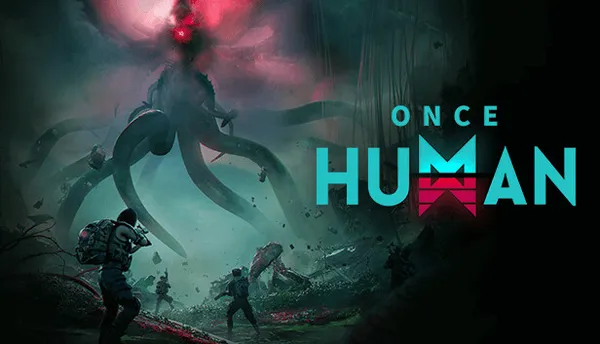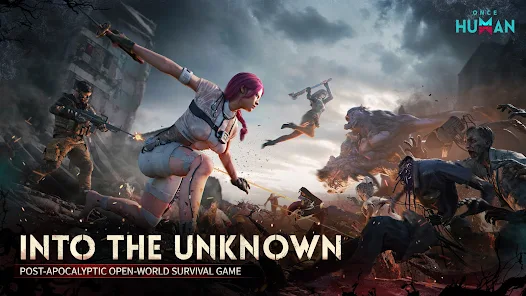
Once Human Mobile — Post-apocalypse Blended with SCP and Left 4 Dead Elements
Once Human Mobile is emerging as one of the most distinctive post-apocalyptic multiplayer games of 2025. Developed by Starry Studio, this project combines the gritty horror of the SCP Foundation with the cooperative mechanics of Left 4 Dead. With its closed beta generating considerable attention across Android and iOS communities, the game offers a fresh experience that goes beyond simple survival tropes. Below, we break down what makes Once Human Mobile truly stand out in the saturated genre of mobile survival games.
Open World Survival Meets Paranoia-Driven Design
At its core, Once Human Mobile immerses players in a bleak, desolate world torn apart by an event called “The Stardust.” This substance mutates both humans and the environment, creating grotesque lifeforms and unpredictable anomalies. The game pushes players to scavenge, craft, and defend, all while the threat of mutation looms over them at every moment.
Unlike many mobile survival titles, Once Human doesn’t just offer fetch quests or meaningless combat. Instead, it weaves in psychological tension: locations frequently change due to Stardust storms, and creatures react to player actions with disturbing unpredictability. These mechanics deepen immersion and encourage strategic play.
Players must also manage their “Sanity” meter, which decreases in certain zones filled with Stardust energy. A low Sanity level results in hallucinations, altered controls, and even hostile illusions, making exploration dangerous and requiring both foresight and courage.
Multiplayer Integration with a Narrative Core
One of the most ambitious aspects of Once Human Mobile is its seamless co-op experience. Players can join squads, build shared shelters, and fight off mutated bosses together. This isn’t just tacked-on multiplayer — it’s a key part of the world-building, with story arcs and dialogue shifting depending on team dynamics and choices.
Voice chat and ping systems are fully integrated, providing effective communication during high-intensity situations. Squad leaders can issue commands, mark enemy locations, and even vote on major decisions that affect quest outcomes. This level of coordination elevates the game beyond casual mobile fare.
The game’s lore is revealed through exploration, documents, and NPCs scattered across map zones. Co-op missions often require players to solve SCP-style puzzles, retrieve encrypted data, or even survive an ambush by other mutated humans. Each success feeds into a shared progression system that unlocks new regions and narrative content.
Inspiration from Left 4 Dead and SCP Foundation
Rather than hiding its influences, Once Human Mobile wears them proudly. Its horde-mode events, chaotic combat, and grotesque boss creatures are all clear homages to Left 4 Dead. However, these moments are given added weight through eerie soundscapes and mutated designs that lean heavily on SCP mythos.
Creatures like the “Black Spine” or the “Whispering Reaper” are procedurally generated, ensuring no two encounters are alike. Each boss has specific weakness zones and behavioural cycles that mimic SCP creature behaviour, requiring both memorisation and improvisation to survive.
The SCP influence is further reinforced through the presence of secret labs, underground bunkers, and encrypted transmissions. These locations house relics from pre-collapse science divisions that tried — and failed — to contain the Stardust outbreak. Exploring them offers narrative depth for lore-seeking players and dangerous rewards for combat-focused ones.
Customisation and Base-Building Mechanics
Beyond its action elements, Once Human Mobile allows for deep personalisation. Players can create outposts, fortify them with automated defences, and assign resource roles to NPCs. The crafting system extends to weapons, clothing, and even drone companions, making it ideal for long-term mobile play sessions.
Base-building isn’t just cosmetic. If players don’t maintain defensive structures, their shelters can be overrun by mutated wildlife or hostile survivors. Certain materials decay in real time, requiring maintenance to keep core facilities running.
Factions also come into play. Joining one of the game’s ideological groups grants access to exclusive technology trees, missions, and gear. This adds replayability and a degree of RPG strategy that’s rare in mobile survival games.

Realistic Monetisation and Community Feedback
In June 2025, Once Human Mobile operates on a free-to-play basis with a cosmetic-only monetisation model. Starry Studio has clarified there are no pay-to-win mechanics. This transparency has earned early praise from beta testers and the broader mobile community.
Season passes exist but are strictly optional and provide skins, emotes, and visual upgrades. In-app purchases cannot speed up progression, and player stats are unaffected by paid content — a rare approach in today’s mobile gaming market.
Community response has been overwhelmingly positive. On forums like Reddit and TapTap, players have highlighted the game’s polish, sound design, and ethical monetisation. Developers are active on Discord, regularly releasing roadmaps and bug fixes based on player input, which builds trust and engagement.
What to Expect Post-Launch
Following the June 2025 beta, Starry Studio is expected to roll out a global release by Q4 2025. Planned updates include new biomes, faction wars, and enhanced controller support for tablets and Chromebooks. Cross-progression between mobile and PC is already confirmed.
Developers have teased upcoming anomalies that will change regional maps dynamically, introducing rare events that occur globally and synchronously. These moments will bring server-wide challenges where factions must cooperate or compete for survival.
If the development continues with this level of quality and player involvement, Once Human Mobile is poised to set a new standard in mobile survival gaming by the end of the year. It combines tactical depth, narrative intrigue, and community respect — a combination that many rivals still struggle to balance.
